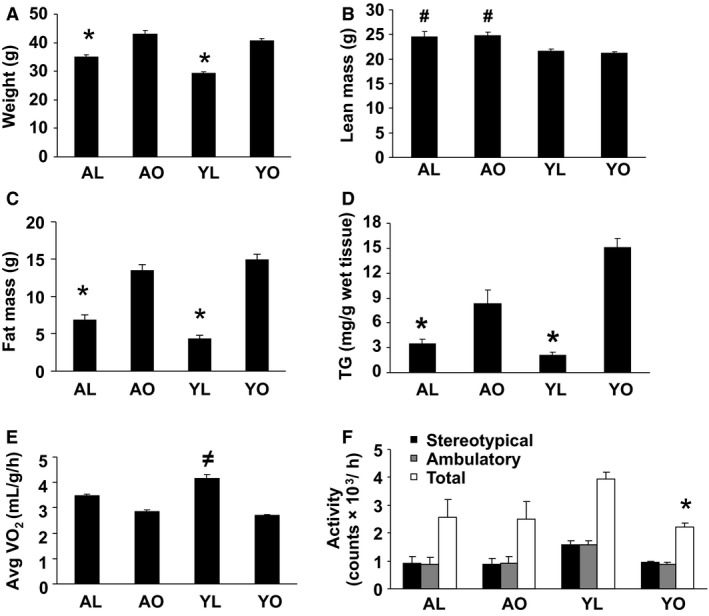Figure 1.

Physiological characteristics of mice. Young lean (YL) and young obese (YO) 3‐week‐old C57Bl6/J mice were exposed to either a standard chow (YL) or high‐fat (YO) diet for 14 weeks prior to analysis. Aged lean (AL) and aged obese (AO) C57Bl6/J mice were exposed to a standard chow diet for 14–15 months prior to analysis. Mice were then separated into AL or AO based on their degree of adiposity (AL, fat mass <9.5 g, AO fat mass >10.5 g). A minimum of six animals per group were individually analyzed and results are presented as means ± SE. Significant differences are indicated (*as compared to the other three groups, #as compared to YL and YO, ≠as compared to YO and AO, P < 0.05). (A) Animal weights. (B and C) Fat mass and lean mass obtained via echo MRI at 17 weeks (young) or 16 months (aged) of age. (D) Triglyceride (TG) content of the liver. (E) Energy expenditure assessed by CLAMS. (F) Activity assessed by CLAMS.
